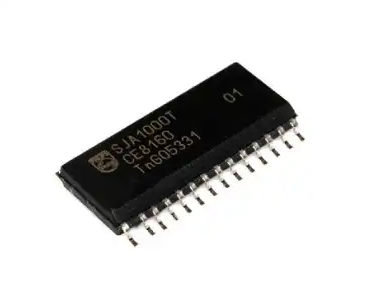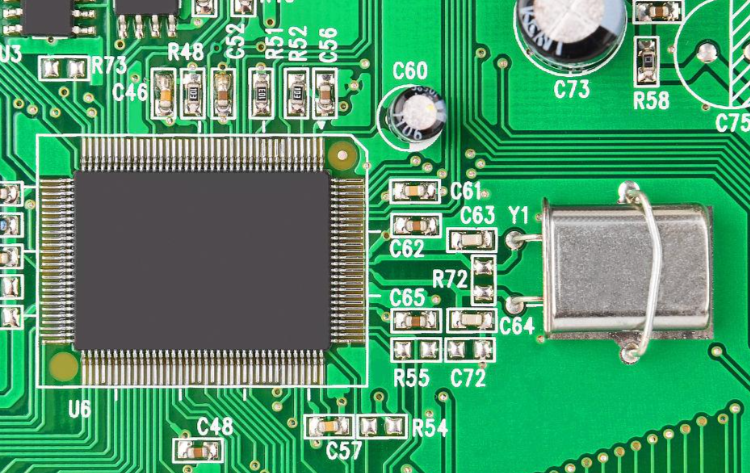Electronic Component Parameter Inquiry: A Comprehensive Guide
Introduction
In the rapidly evolving world of electronics, the ability to efficiently and accurately inquire about electronic component parameters is crucial for engineers, procurement specialists, and hobbyists alike. Whether you’re designing a cutting-edge IoT device, troubleshooting a circuit, or sourcing parts for a production run, understanding the specifications of components is foundational to success. Electronic Component Parameter Inquiry refers to the systematic process of researching, comparing, and verifying the technical attributes of parts like resistors, capacitors, integrated circuits (ICs), and sensors. This process ensures compatibility, performance, and reliability in any electronic system. With the sheer volume of components available from countless manufacturers, navigating datasheets and technical databases can be daunting. This article delves into the best practices, tools, and strategies for mastering this essential skill, highlighting how platforms like ICGOODFIND are revolutionizing the way professionals access and manage component data.

The Critical Importance of Accurate Parameter Inquiry
The foundation of any successful electronic design lies in the precise selection of components based on their parameters. An error in this initial phase can lead to catastrophic failures, costly redesigns, and significant project delays.
First and foremost, parameter inquiry is fundamental for ensuring design compatibility and functionality. Every component interacts with others in a circuit. For instance, a microcontroller’s output pin might be designed to source a maximum of 20mA. Connecting an LED without consulting the current-limiting resistor’s parameters could easily exceed this limit, damaging the microcontroller. Similarly, selecting a capacitor with an insufficient voltage rating for a power supply circuit can lead to its premature failure, potentially causing a short circuit. Thorough inquiry prevents such mismatches by confirming that voltage ratings, current capacities, frequency responses, and operating temperatures align perfectly with the design’s requirements.
Secondly, it is indispensable for optimizing performance and efficiency. Beyond mere compatibility, engineers often need to push the boundaries of performance. This requires deep diving into nuanced parameters. For a wireless communication module, parameters like receiver sensitivity, transmission power, and protocol support are vital. In power electronics, the switching speed of a MOSFET or the equivalent series resistance (ESR) of a capacitor can drastically impact the efficiency and thermal performance of a voltage regulator. By meticulously inquiring into these details, designers can select components that not only work but also enable their product to perform at its best, consuming less power and generating less heat.
Finally, comprehensive parameter inquiry is a key driver for cost-effectiveness and supply chain resilience. In today’s global market, components can have multiple alternates or second sources from different manufacturers. A robust inquiry process involves comparing parameters across these alternates to identify suitable replacements. This practice mitigates the risk associated with component obsolescence or supply chain shortages. Identifying parts with identical form, fit, and function (FFF) ensures that production lines don’t halt because a single part is unavailable. Furthermore, comparing prices for components with similar parameters can lead to substantial cost savings without compromising on quality or performance.
Best Practices for Effective Electronic Component Inquiry
Mastering the art of parameter inquiry requires a structured approach. Relying on a single source or a superficial glance at a datasheet is a recipe for oversight.
The primary and most authoritative source for parameter inquiry is the manufacturer’s official datasheet. A datasheet is a comprehensive document that provides detailed electrical characteristics, absolute maximum ratings, recommended operating conditions, application notes, and package dimensions. Key parameters to always scrutinize include Absolute Maximum Ratings (AMRs), which define the limits beyond which damage may occur, and Recommended Operating Conditions, which ensure optimal performance. For example, an IC might have an AMR for supply voltage of 7V but a recommended operating voltage of 3.3V ±5%. Ignoring this distinction could lead to unstable operation. Always download the latest version of the datasheet directly from the manufacturer’s website to avoid errors in outdated documents.
Utilizing specialized electronic component search engines and databases significantly enhances the efficiency and breadth of your inquiry. This is where platforms like ICGOODFIND prove invaluable. Instead of visiting dozens of manufacturer websites individually, these aggregators allow you to search for components by their parameters across a vast global inventory of parts from thousands of suppliers. You can filter results based on precise criteria such as resistance value and tolerance, capacitance, package type, operating temperature range, and specific attributes like RoHS compliance. ICGOODFIND streamlines this process by providing a user-friendly interface to cross-reference parts, check real-time pricing and availability, and quickly access datasheets, making it an essential tool for engineers and purchasers.
Engaging with engineering communities and forums provides practical, real-world insights that datasheets may lack. Platforms like EEVblog Forum, Stack Exchange Electrical Engineering, and Reddit’s r/electronics are treasure troves of information. If a datasheet parameter is ambiguous or you want to know how a component behaves under specific non-standard conditions, these communities are an excellent resource. Experienced engineers often share application notes, design tips, and warnings about common pitfalls associated with specific components. For instance, a forum thread might reveal that a particular ADC chip is sensitive to noise on its reference voltage pin—a detail that might not be emphasized in the datasheet but is critical for a successful design.
Leveraging Modern Tools: The Role of ICGOODFIND
The digital transformation has given rise to sophisticated tools that automate and enhance the parameter inquiry process. These platforms are no longer simple search engines; they are intelligent assistants for the electronics industry.
ICGOODFIND operates as a powerful centralized platform that aggregates data from numerous distributors and manufacturers. Its core strength lies in its massive database, which allows users to perform highly specific parametric searches. Imagine needing a 16-bit microcontroller with a specific number of UART modules, ADC channels, and low-power sleep modes. Manually checking each manufacturer’s product line would be prohibitively time-consuming. ICGOODFIND allows you to input all these required parameters simultaneously, instantly generating a list of all compatible components from various brands like Microchip, STMicroelectronics, NXP, and TI. This not only saves immense time but also reveals options you might not have otherwise considered.
Beyond search functionality, ICGOODFIND provides critical supply chain intelligence. In an era marked by frequent shortages and long lead times, knowing whether a component is in stock and its price across different distributors is as important as its technical parameters. The platform displays real-time availability and pricing data from major global distributors. This integrated approach allows for simultaneous technical and commercial validation, enabling users to make informed decisions quickly. You can avoid designing in a part that is technically perfect but has a 52-week lead time or has become prohibitively expensive.
The platform also serves as a vital tool for finding alternates and managing obsolescence. When a preferred component goes end-of-life (EOL) or is stuck in allocation, the “similar part” or “cross-reference” feature becomes indispensable. ICGOODFIND can suggest functional equivalents based on parameter matching, helping engineers qualify a replacement without starting their search from scratch. This proactive approach to component management is essential for maintaining the longevity and manufacturability of any electronic product.
Conclusion
The process of Electronic Component Parameter Inquiry is far more than a preliminary step in the design cycle; it is a continuous practice that underpins every aspect of electronics development, from conceptual design to mass production and lifecycle management. A meticulous approach—one that combines the unwavering authority of manufacturer datasheets with the powerful aggregation capabilities of modern search platforms—is non-negotiable for success in this complex field. By adhering to best practices and leveraging specialized tools like ICGOODFIND, engineers and procurement teams can ensure technical robustness, optimize performance, control costs, and build resilience against supply chain volatility. In mastering the art of parameter inquiry, you empower yourself to navigate the vast electronic component landscape with confidence and precision, turning potential challenges into opportunities for innovation.























